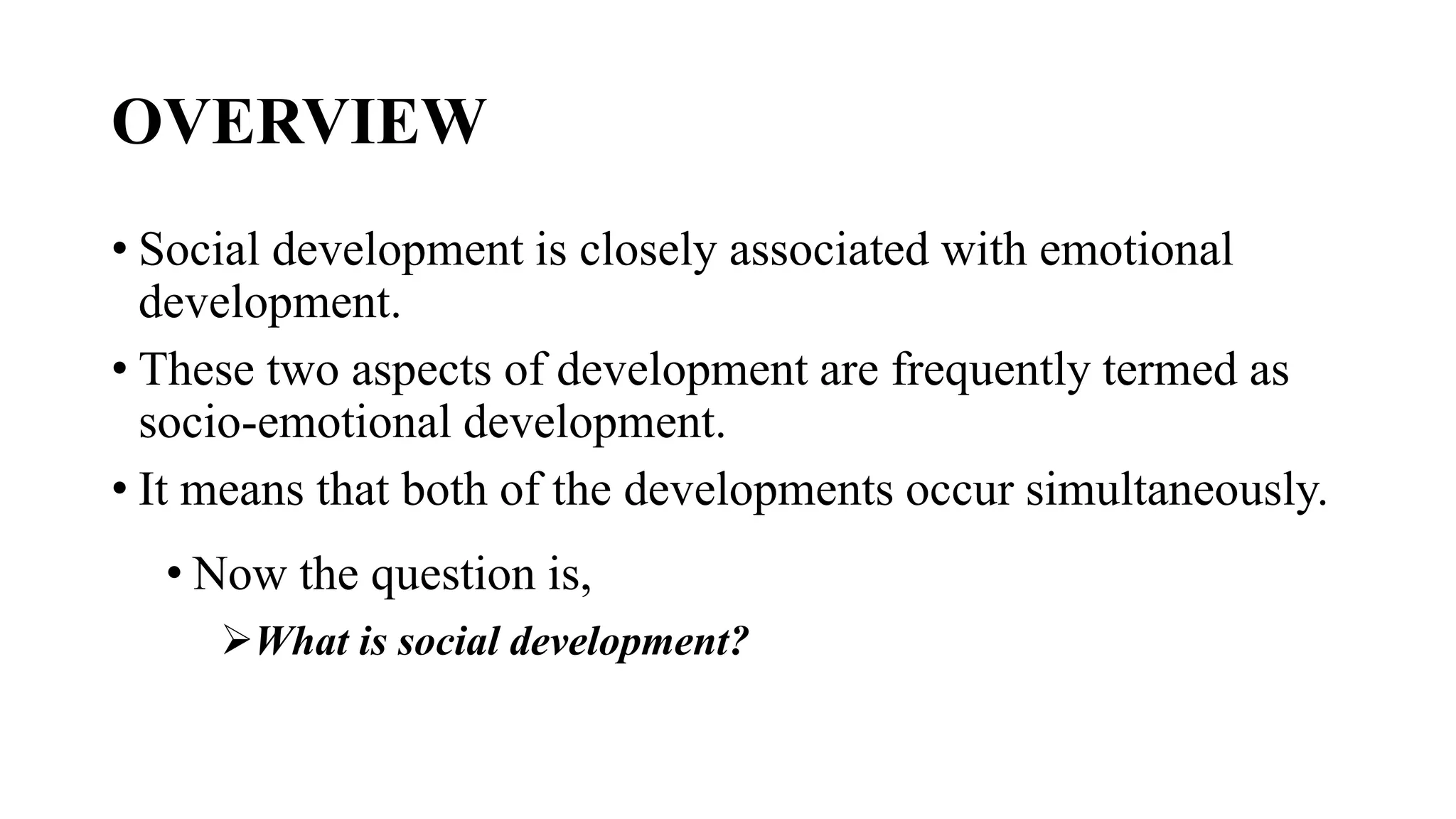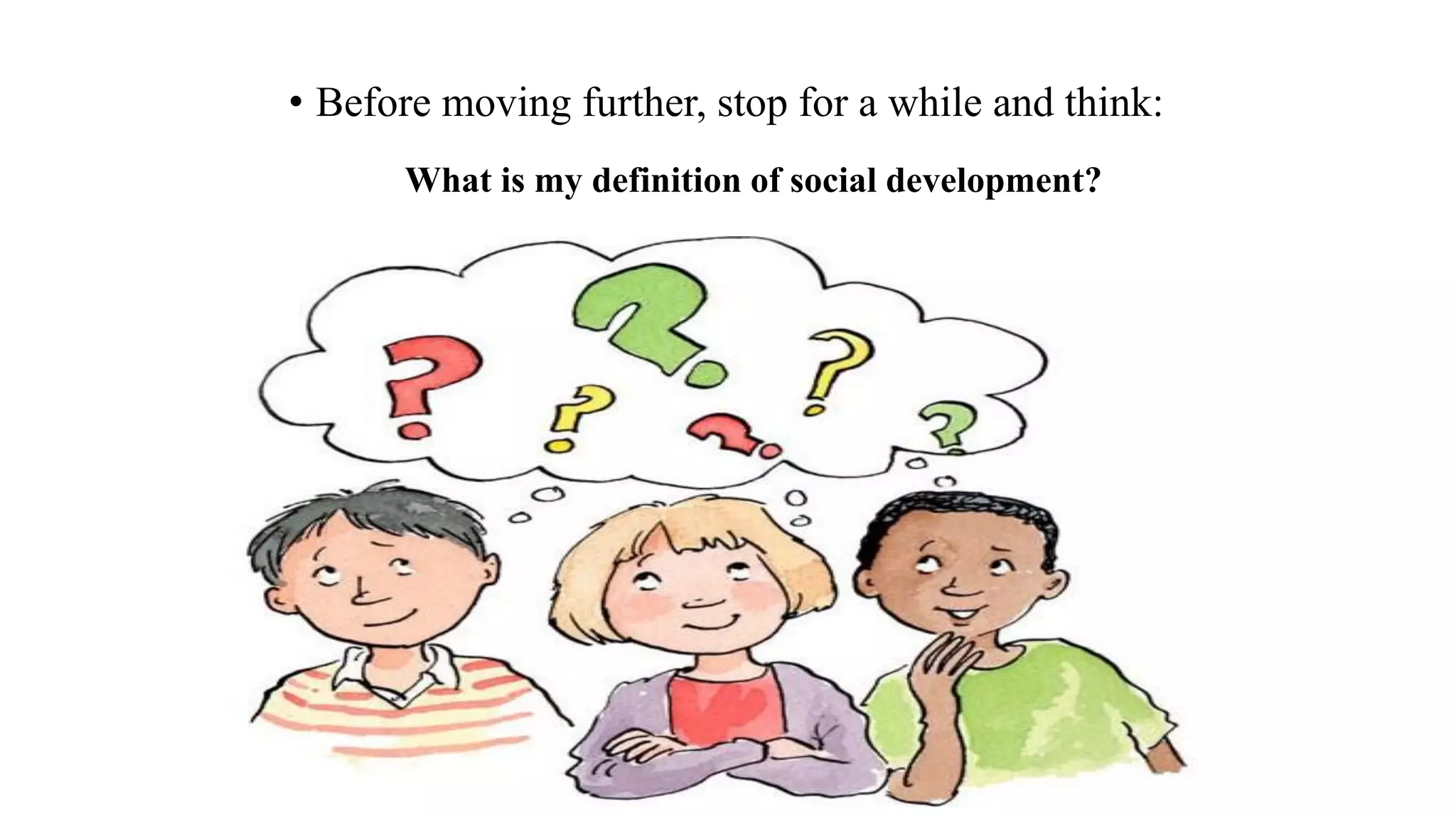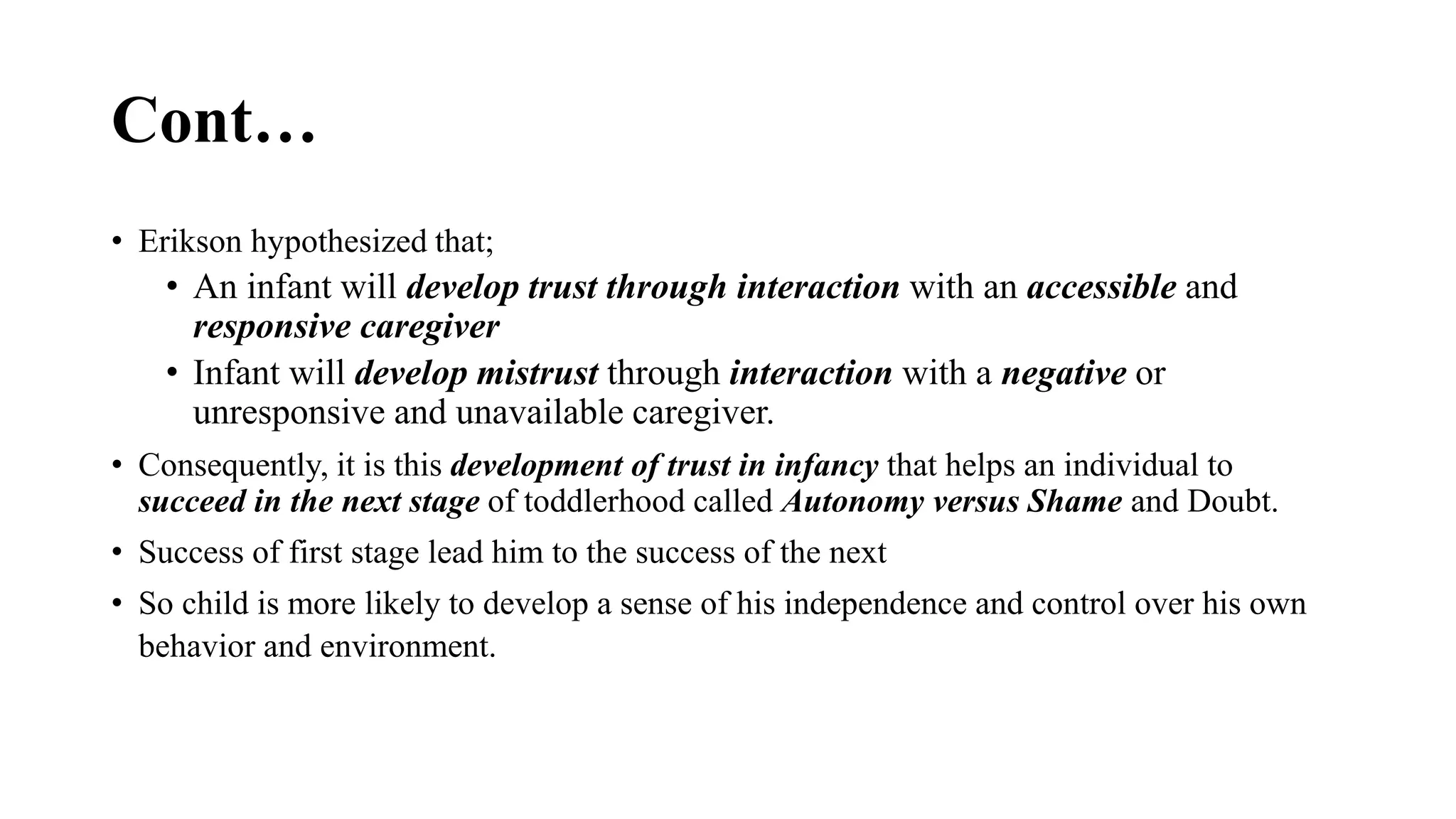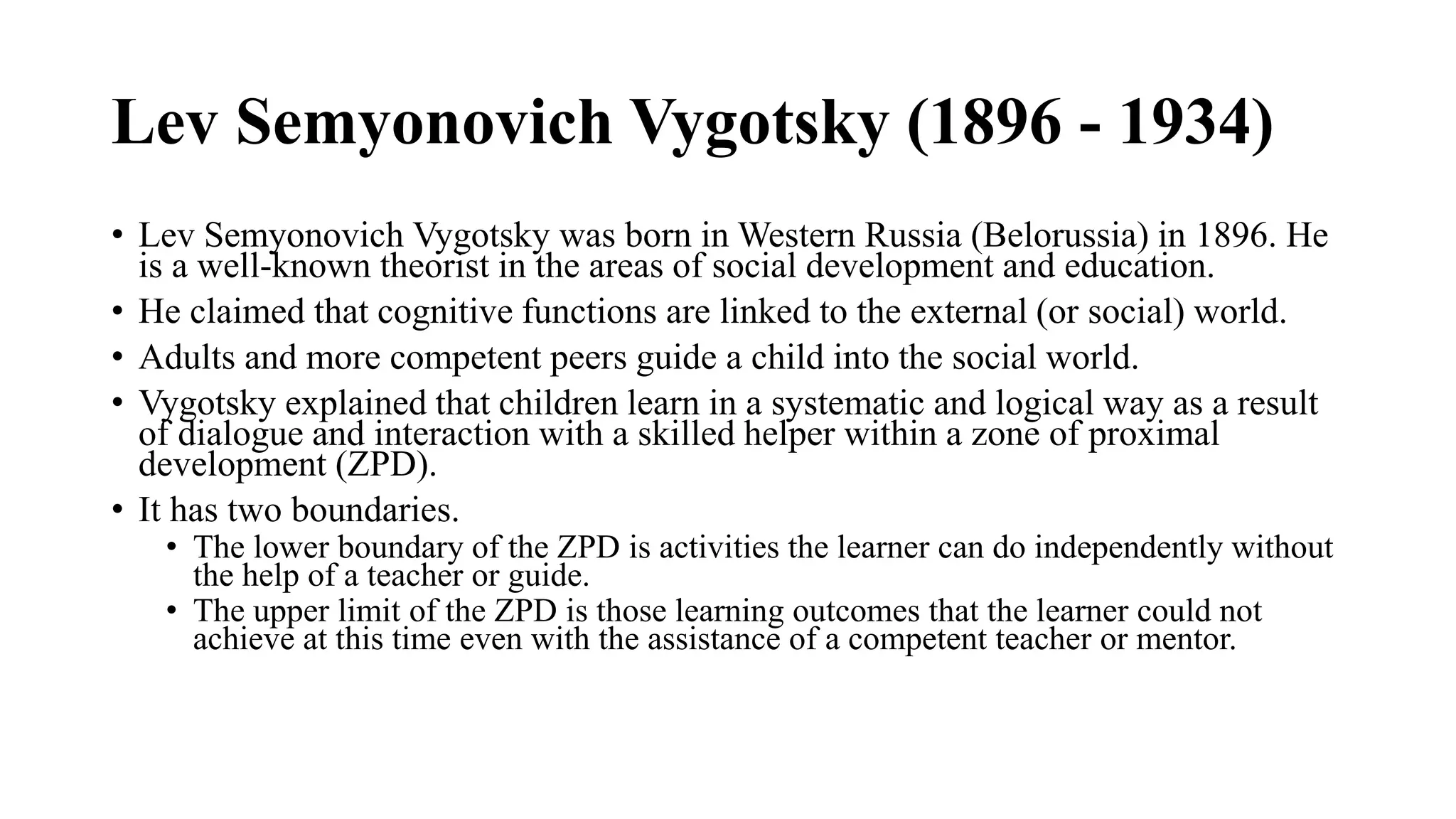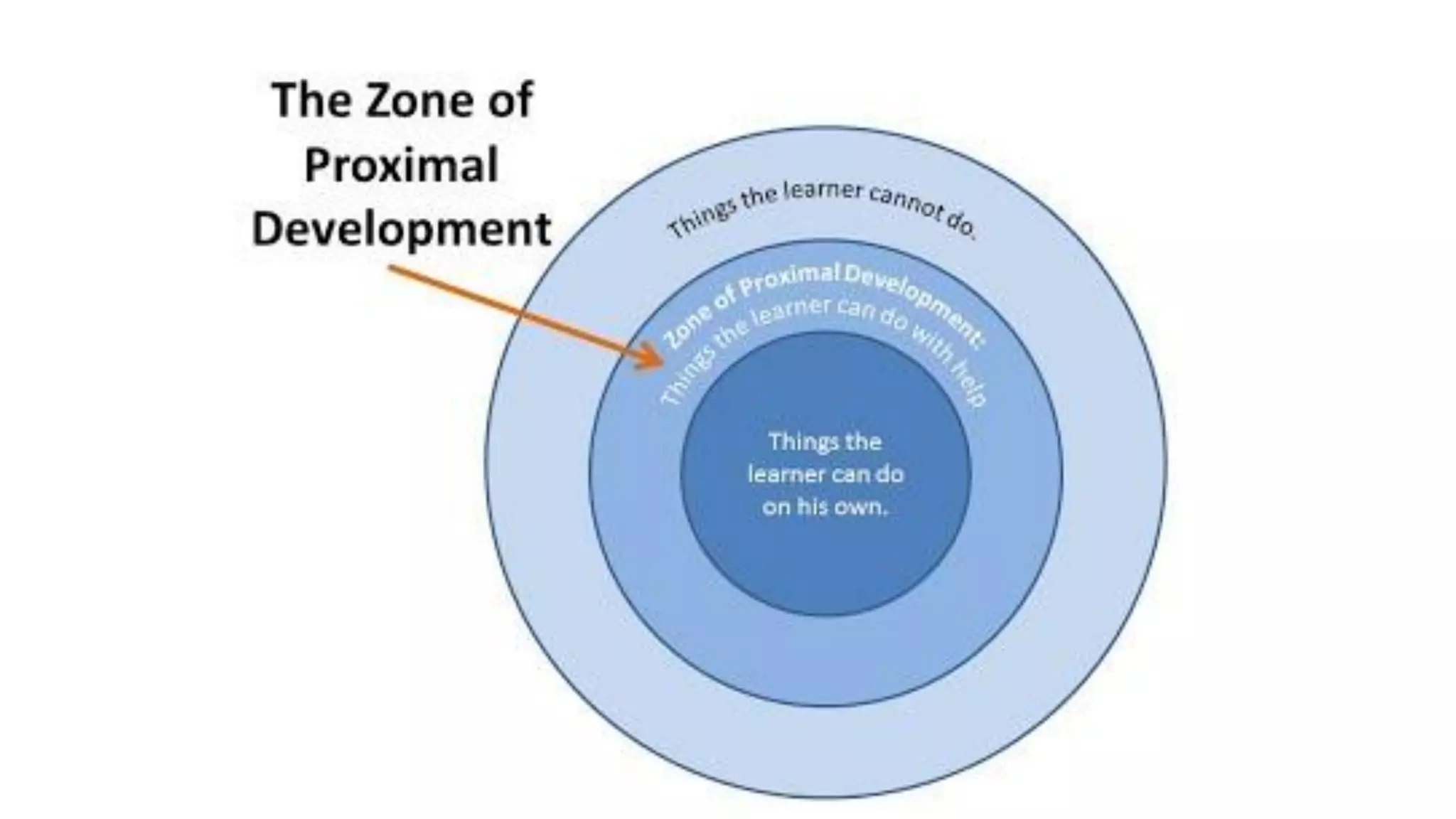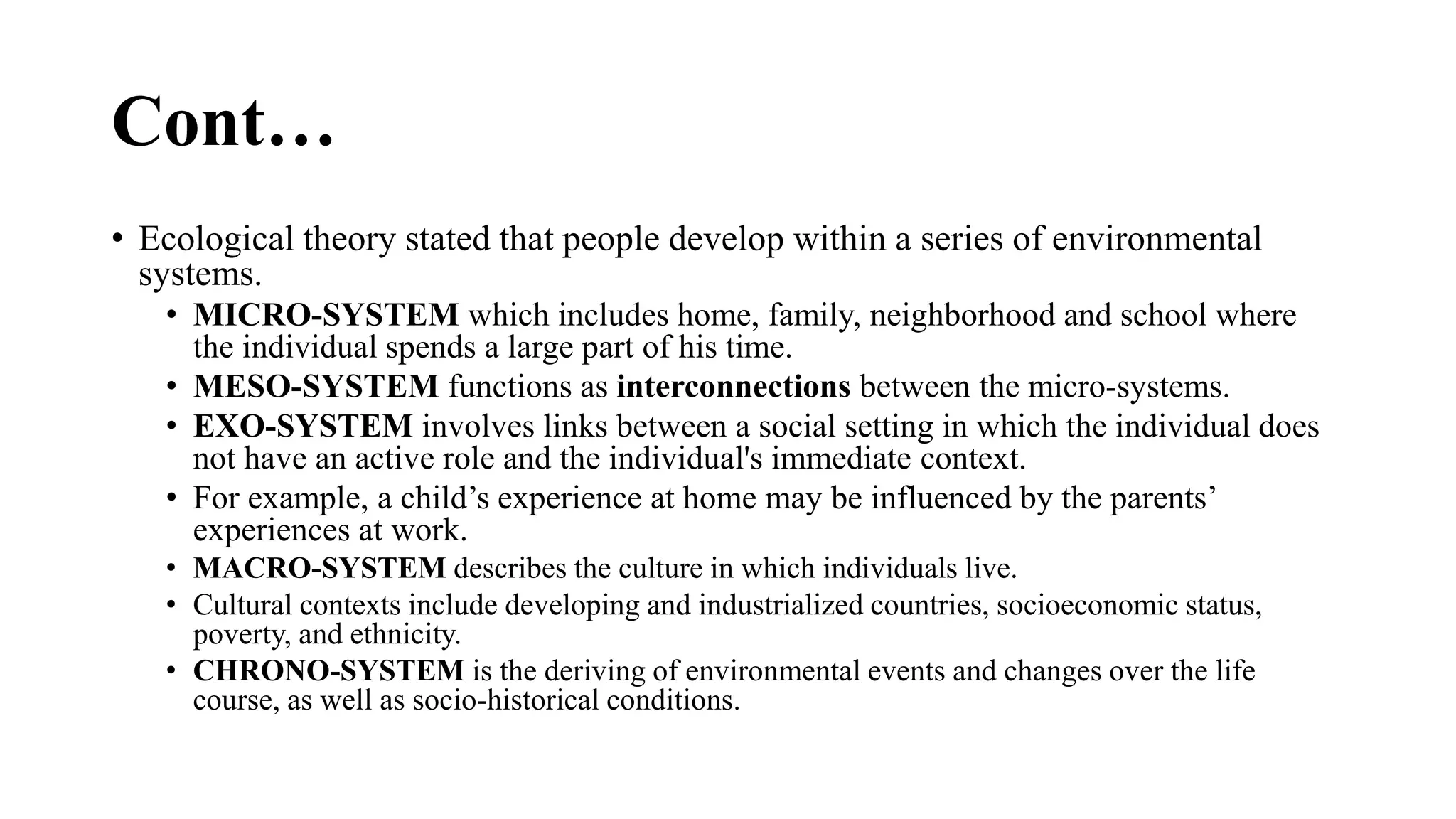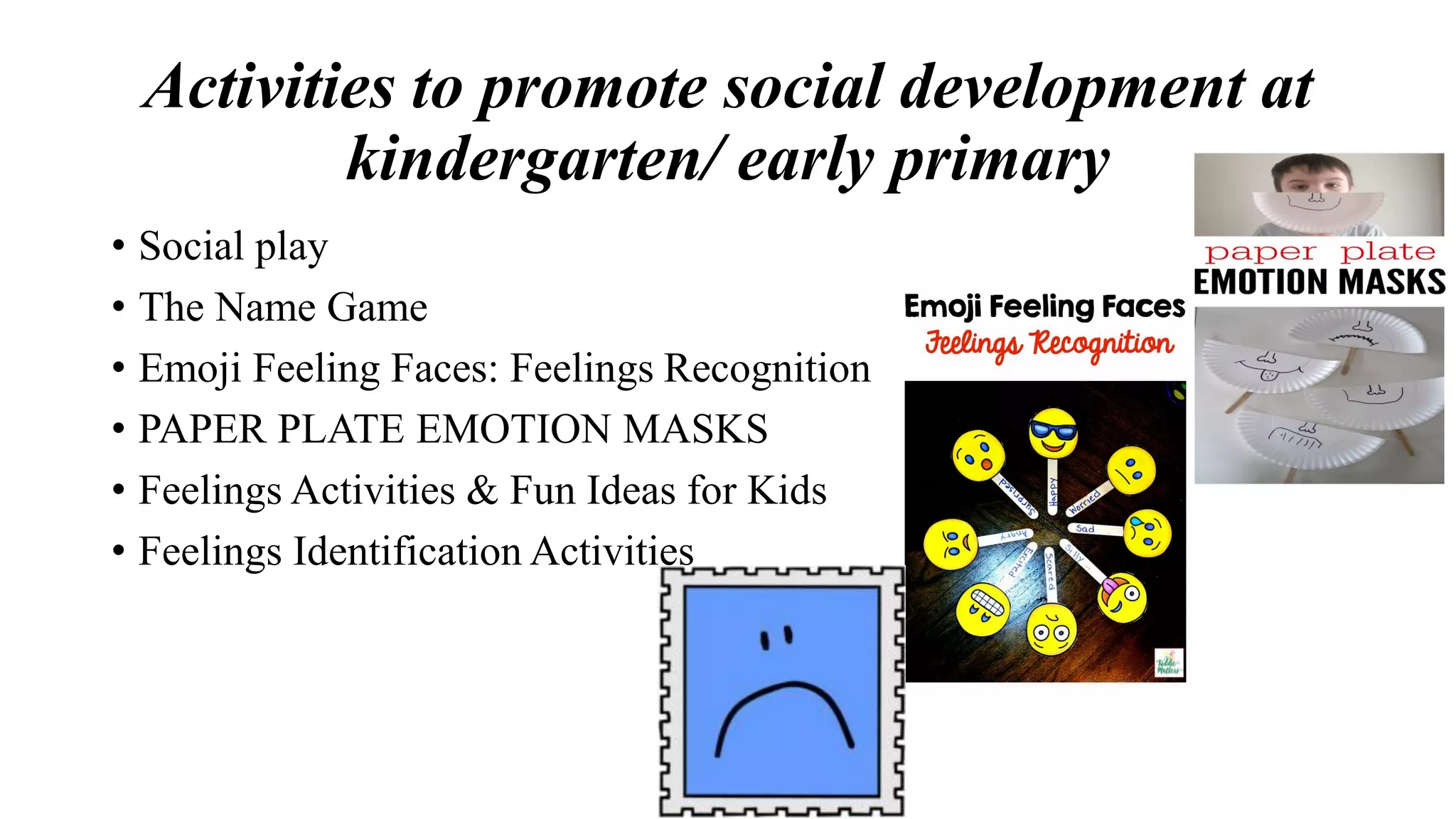The document outlines objectives and content related to social development for different age groups. It discusses:
1. The key objectives of the unit which are to define social development, describe theories of social development, and characteristics and appropriate activities for preschool, kindergarten, and elementary aged children.
2. An overview of social development being closely tied to emotional development. It involves learning social skills through relationships with others.
3. Social development theories discussed include attachment theory, Erikson's psychosocial stages, Vygotsky's zone of proximal development and scaffolding, and Bronfenbrenner's ecological systems theory.
4. Characteristics of social development for preschool, kindergarten, and elementary


